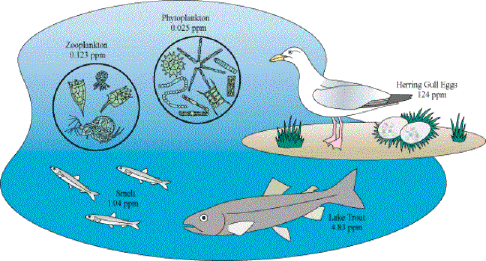When you take a moment to reflect on the history of product
development at Monsanto, what do you find? Here are twelve products that
Monsanto has brought to market. See if you can spot the pattern…
Also read: Germany Buys Monsanto – and Sells the TTIP to Europe
#1 – Saccharin
Did you know Monsanto got started because of an artificial sweetener?
John Francisco Queeny founded Monsanto Chemical Works in St. Louis,
Missouri with the goal of
producing saccharin for Coca-Cola. In stark contrast to its sweet beginnings,
studies performed during the early 1970s,* including a study by the
National Cancer Institute in 1980, showed that saccharin caused
cancer in test rats and mice.
After mounting pressure from consumers, the
Calorie Control Council, and manufacturers of artificial sweeteners and diet sodas, along with
additional studies (several
conducted by the sugar and sweetener industry) that reported flaws in
the 1970s studies, saccharin was delisted from the NIH’s Carcinogen
List. A variety of letters from
scientists advised against delisting; the official document includes the
following wording to
this day: “although it is impossible to absolutely conclude that it
poses no threat to human health, sodium saccharin is not reasonably
anticipated to be a human carcinogen under conditions of general usage
as an artificial sweetener.” (*Read the Chemical Heritage Foundation’s
History of Saccharin here.)

#2 – PCBs
During the early 1920s, Monsanto began expanding their chemical
production into polychlorinated biphenyls (PCBs) to produce
coolant fluids for electrical transformers, capacitors, and electric
motors. Fifty years later,
toxicity tests began reporting
serious health effects from PCBs in laboratory rats exposed to the chemical.
After another decade of studies, the truth could no longer be contained: the U.S. Environmental Protection Agency (EPA)
published a report citing
PCBs as the cause of cancer in animals, with additional evidence that
they can cause cancer in humans. Additional peer-reviewed health studies
showed a causal link between exposure to PCBs and non-Hodgkin Lymphoma,
a frequently fatal form of cancer.
In 1979, the United States Congress recognized PCBs as a significant
environmental toxin and persistent organic pollutant, and banned its
production in the U.S. By then Monsanto already had manufacturing
plants abroad, so they weren’t entirely stopped until the Stockholm
Convention on Persistent Organic Pollutants banned PCBs globally in
2001.
And that’s when Monsanto’s duplicity was uncovered:
internal company memos from 1956 surfaced, proving that Monsanto had known about dangers of PCBs from early on.
In 2003, Monsanto paid out over $600 million to residents of
Anniston, Alabama, who experienced severe health problems including
liver disease, neurological disorders and cancer after
being exposed to PCBs — more than double the payoff that was awarded in
the case against Pacific Gas & Electric made famous by the movie
“Erin Brockovich.”
And yet the damage persists: nearly 30 years after PCBs have been
banned from the U.S., they are still showing up in the blood of pregnant
women, as
reported in a 2011 study by the University of California San Francisco; while other studies are indicating a parallel between
PCBs and autism.
#3 – Polystyrene
In 1941, Monsanto began focusing on plastics and synthetic polystyrene, which is still widely used in food packaging and
ranked 5th in the EPA’s 1980s listing of chemicalswhose production generates the most total hazardous waste.
#4 – Atom bomb and nuclear weapons
Shortly after acquiring Thomas and Hochwalt Laboratories, Monsanto turned this division into their
Central Research Department. Between 1943 to 1945, this department coordinated key production efforts of the
Manhattan Project—including plutonium purification and production and, as part of the Manhattan Project’s
Dayton Project, techniques to refine chemicals used as triggers for atomic weapons (an era of U.S. history that sadly included the
deadliest industrial accident).
#5 – DDT
In 1944, Monsanto became one of the first manufacturers of the
insecticide DDT to combat malaria-transmitting mosquitoes. Despite
decades of Monsanto propaganda insisting that DDT was safe, the true
effects of DDT’s toxicity were at last confirmed through outside
research and in 1972, DDT was banned throughout the U.S.
This chart illustrates how much dioxin an average American consumes per day
#6 – Dioxin
In 1945, Monsanto began promoting the use of chemical pesticides in
agriculture with the manufacture of the herbicide 2,4,5-T (one of the
precursors to Agent Orange), containing dioxin. Dioxins are a group of
chemically-related compounds that since become known as one of the “
Dirty Dozen”
— persistent environmental pollutants that accumulate in the food
chain, mainly in the fatty tissue of animals. In the decades since it
was first developed, Monsanto has been accused of covering up or failing
to report dioxin contamination in a wide range of its products.
#7 – Agent Orange
During the early 1960s, Monsanto was one of the two primary
manufacturers of Agent Orange, an herbicide / defoliant used for
chemical warfare during the Vietnam War. Except Monsanto’s formula had
dioxin levels many times higher than the Agent Orange produced by Dow
Chemicals, the other manufacturer (which is why Monsanto was the key
defendant in the lawsuit brought by Vietnam War veterans in the United
States).
(Pictured at left, Anh and Trang Nhan, with their father, when they
first arrived at the Hoi An Orphanage; below are the same brothers
shortly before Trang’s death. Source:
Kianh Foundation Newsletter, Dec. 2011)
As
a result of the use of Agent Orange, Vietnam estimates that over
400,000 people were killed or maimed, 500,000 children were born with
birth defects, and up to 1 million people were disabled or suffered from
health problems—not to mention the far-reaching impact it had on the
health of over 3 million American troops and their offspring.
 Her er linket til TV-udsendelsen: https://www.dr.dk/tv/se/mellem-himmel-og-jord/mellem-himmel-og-jord-2-6
Her er linket til TV-udsendelsen: https://www.dr.dk/tv/se/mellem-himmel-og-jord/mellem-himmel-og-jord-2-6















